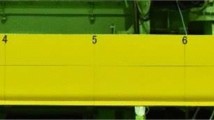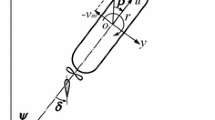Abstract
Floating moored offshore structures have a significant future in offshore operations as an attractive economic alternative to fixed structures in deep waters and/or in areas where there is no existing infrastructure. This paper describes an analysis procedure based on the structure variable approach to estimate load and response values of a moored offshore platform at a given return period by taking into account the joint occurrence of wave, wind, and current. The results show that the most severe mooring loads may not occur when wind, wave, and current are collinear and are at their maximum design values, i.e., the 50- or 100-year case. It is recommended that the extreme mooring design loads for moored offshore systems should be determined through a range of physical or numerical simulations where wave, wind, and current are noncollinear and act with less severe magnitudes than the 50- or 100-year case. This recommendation has also been adopted in the ITTC/Ocean Engineering Committee recommendations to the ITTC Conference held in September 1996.
Similar content being viewed by others
References
Recommended practise for design and analysis of stationkeeping systems for floating structures (1995) API recommended practise 2SK, 1st edn, Washington
Rules for classification of mobile offshore units—position mooring (1996) Det norske Veritas, Høvik, Norway
Yilmaz O, Incecik A (1996) Hydrodynamic design of moored floating platforms. J Mar Struct 9:545–575
Yilmaz O, Incecik A (1995) Dynamic response of moored semisubmersible platforms to non-collinear wave, wind and current loading. Proceedings of the 5th International Offshore and Polar Engineering Conference, The Hague
Incecik A (1982) Design aspects of the hydrodynamic and structural loading on floating offshore platforms under wave excitation. PhD thesis, University of Glasgow
Soylemez M (1990) Motion response simulation of damaged floating platforms. PhD thesis, University of Glasgow
Nienhis IU (1968) Simulation of low frequency motions of dynamically positioned offshore structures, vol 7. The Royal Institution of Naval Architects, London
Chan HS (1990) A three-dimensional technique for predicting first- and second-order hydrodynamic forces on a marine vehicle advancing in waves. PhD thesis, University of Glasgow
Ochi MK, Shin YS (1988) Wind turbulent spectra for design consideration of offshore structures. Proceedings of Offshore Technology Conference, Paper No. 5736, Houston
Oortmerssen IGV (1976) The motions of a moored ship in waves. Publication No. 510, Netherlands Ship Model Basin, Wageningen
International towing tank conference proceedings (1993) Ocean Engineering Committee Report, San-Francisco
Yilmaz O (1994) Parametric studies with a time domain model developed for moored semi-submersibles. Department of Naval Architecture and Ocean Engineering, Report No. NAOE-94-29, University of Glasgow
Yilmaz O (1994) Extreme motion response simulation with a time domain model developed for moored semi-submersibles. Department of Naval Architecture and Ocean Engineering, Report No. NAOE-94-35, University of Glasgow
Yilmaz O (1995) Mooring line damping prediction and extreme motion response analysis of moored semi-submersibles. Department of Naval Architecture and Ocean Engineering, Report No. NAOE-95-16, University of Glasgow
Yilmaz O (1995) Effect of double-peaked wave spectra on the behaviour of moored semi-submersibles. Department of Naval Architecture and Ocean Engineering, Report No. NAOE-95-17, University of Glasgow
Bowers J, Morton I, Mould G (1997) Extreme value analysis of the structural response of a single point moored vessel. Underwater technology. J Soc Underwater Technol 22(3):87–93
Marshall P, Rezvan M, Gunatunga A (1995) Response based design criteria for West of Shetlands. Offshore Technol pp 42–45
Wen YK, Banon H (1991) Development of environmental combination design criteria for fixed platforms in the Gulf of Mexico. Proceedings of Offshore Technology Conference, Houston, pp 365–375
Press WH, Flannery BP, Teukolsky SA, et al (1989) Numerical recipes in Pascal: the art of scientific computing. Cambridge University Press, Cambridge
Author information
Authors and Affiliations
About this article
Cite this article
Incecik, A., Bowers, J., Mould, G. et al. Response-based extreme value analysis of moored offshore structures due to wave, wind, and current. J Mar Sci Technol 3, 145–150 (1998). https://doi.org/10.1007/BF02492921
Received:
Accepted:
Issue Date:
DOI: https://doi.org/10.1007/BF02492921




